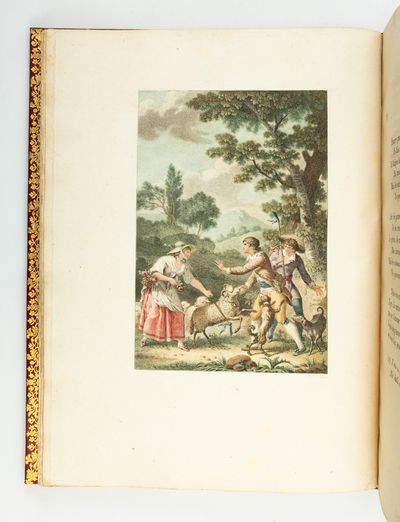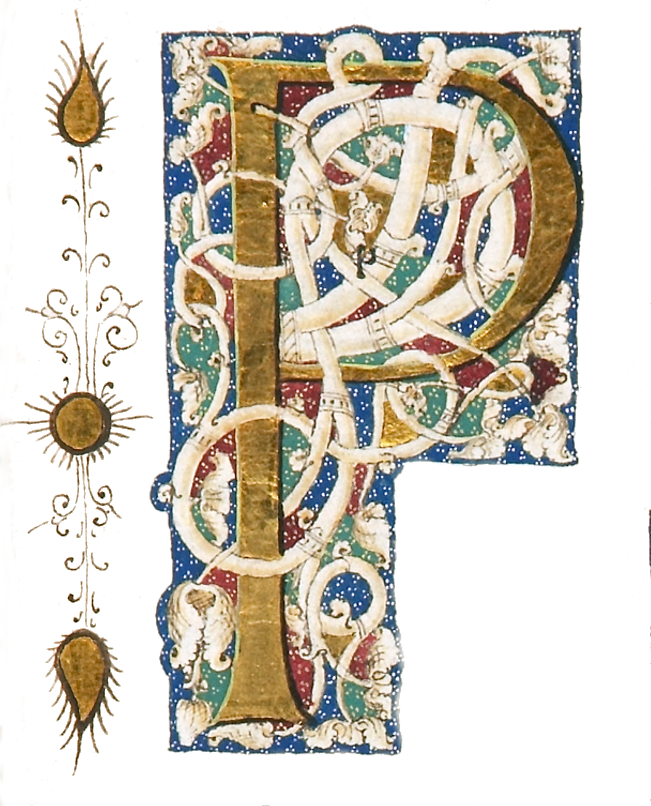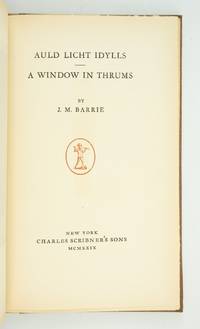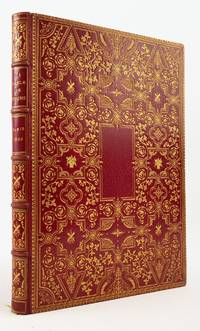first edition
1793 · Paris
by (COLOR PRINTING, 18TH CENTURY). FLORIAN, JEAN-PIERRE CLARIS DE
Paris: Defer de Maisonneuve, 1793. First Edition with these Illustrations. 350 x 262 mm. (13 3/4 x 10 1/4"). 125 pp.
VERY PRETTY 19TH CENTURY CRIMSON MOROCCO, ELEGANTLY GILT, covers framed with floral tools, raised bands, spine panels filled with rows of flower-and-lozenge roll, gilt lettering, gilt turn-ins, top edges gilt. FOUR FINE STIPPLE-ENGRAVED PLATES by Colibert and Cazenave after Monsiau, PRINTED IN COLORS. A Large Paper Copy. Cohen-de Ricci 400; Furstenberg 122; Lewine, p. 188; Maggs 1930 Catalogue of French Illustrated Books 84; Ray, p. 145. Occasional minor foxing (the margins of one plate foxed a bit more), otherwise a fine copy, clean and fresh internally with immense margins, the plates with pleasing colors, and the unworn binding bright with gilt.
This is an especially tall copy of Florian's pastoral romance in imitation of Cervantes, one of the grander French books to be printed in colors when the vogue for such productions took hold during the last years of the 18th century. Ours is one of six such books, all printed after 1786, that Ray singles out for praise as "handsome and imposing volumes." A noted painter of both classical and modern subjects, Monsiau (1754-1837) was also an illustrator whose "abundant and interesting work in this line" is underrated, even though it has the merits of being simple, natural, lively, and piquant. (Ray) Monsiau's obscurity, says Ray, may be owing to the fact that he most often worked as a secondary collaborator on major illustrated works; the present book is one of the few he did on his own, and it is among his best. Publisher Defer de Maisonneuve did not originate the technique of stipple engraving on copper plates, but he did perfect the process, which allowed for gradual tonal changes in hues and intensities of color, rather than the "stained glass" effect of separately printed patches of color. Given the turmoil of the period when this book was published, it is quite likely that it did not have an especially decorative original binding, and may have remained in publisher's boards, as was often the case. Happily, a later owner supplied a period-appropriate binding here that matches the opulence of the contents. While our copy has the engraver's name just visible beneath the plates, perhaps disqualifying them as the "avant la lettre" versions used in the Large Paper Copies (per Cohen-de Ricci), the size of the margins here and the quality of the paper certainly argue for that designation.. (Inventory #: ST20474)
VERY PRETTY 19TH CENTURY CRIMSON MOROCCO, ELEGANTLY GILT, covers framed with floral tools, raised bands, spine panels filled with rows of flower-and-lozenge roll, gilt lettering, gilt turn-ins, top edges gilt. FOUR FINE STIPPLE-ENGRAVED PLATES by Colibert and Cazenave after Monsiau, PRINTED IN COLORS. A Large Paper Copy. Cohen-de Ricci 400; Furstenberg 122; Lewine, p. 188; Maggs 1930 Catalogue of French Illustrated Books 84; Ray, p. 145. Occasional minor foxing (the margins of one plate foxed a bit more), otherwise a fine copy, clean and fresh internally with immense margins, the plates with pleasing colors, and the unworn binding bright with gilt.
This is an especially tall copy of Florian's pastoral romance in imitation of Cervantes, one of the grander French books to be printed in colors when the vogue for such productions took hold during the last years of the 18th century. Ours is one of six such books, all printed after 1786, that Ray singles out for praise as "handsome and imposing volumes." A noted painter of both classical and modern subjects, Monsiau (1754-1837) was also an illustrator whose "abundant and interesting work in this line" is underrated, even though it has the merits of being simple, natural, lively, and piquant. (Ray) Monsiau's obscurity, says Ray, may be owing to the fact that he most often worked as a secondary collaborator on major illustrated works; the present book is one of the few he did on his own, and it is among his best. Publisher Defer de Maisonneuve did not originate the technique of stipple engraving on copper plates, but he did perfect the process, which allowed for gradual tonal changes in hues and intensities of color, rather than the "stained glass" effect of separately printed patches of color. Given the turmoil of the period when this book was published, it is quite likely that it did not have an especially decorative original binding, and may have remained in publisher's boards, as was often the case. Happily, a later owner supplied a period-appropriate binding here that matches the opulence of the contents. While our copy has the engraver's name just visible beneath the plates, perhaps disqualifying them as the "avant la lettre" versions used in the Large Paper Copies (per Cohen-de Ricci), the size of the margins here and the quality of the paper certainly argue for that designation.. (Inventory #: ST20474)



